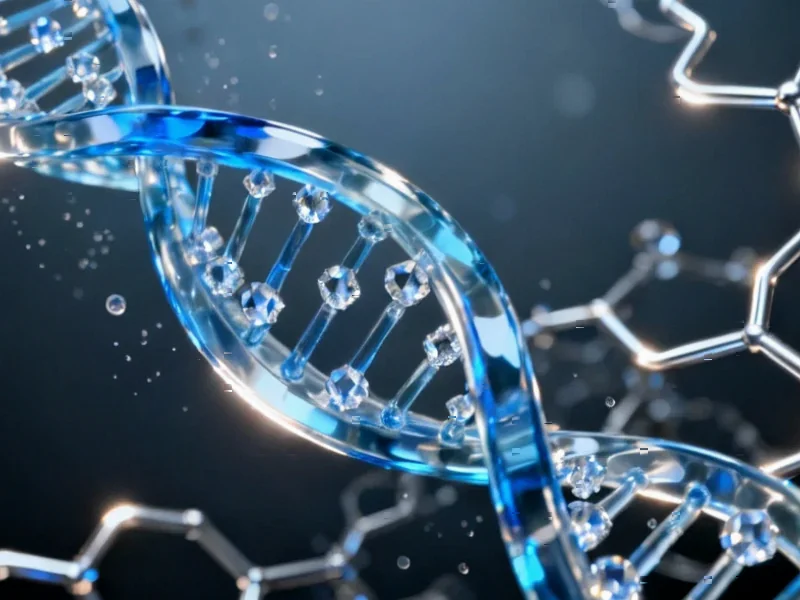Breaking Through Data Barriers in Critical Infrastructure Monitoring
In the high-stakes world of oil and gas transportation, accurately predicting the structural integrity of corroded pipelines has long been hampered by a fundamental challenge: the scarcity of reliable experimental data. Traditional burst tests that measure pipeline residual strength are not only prohibitively expensive but also pose significant safety risks, creating a critical bottleneck in infrastructure maintenance and safety assessment.
Table of Contents
- Breaking Through Data Barriers in Critical Infrastructure Monitoring
- The High Cost of Pipeline Failure and Current Limitations
- Machine Learning’s Data Dilemma
- Generative AI to the Rescue
- Quantifiable Performance Improvements
- From Research to Real-World Application
- Broader Implications for Industrial Computing
- Future Directions and Industry Adoption
A groundbreaking study published in npj Materials Degradation demonstrates how advanced data augmentation techniques are revolutionizing this field by enabling machine learning models to achieve unprecedented accuracy even with limited original datasets. The research represents a significant leap forward in addressing one of the most persistent problems in industrial asset management.
The High Cost of Pipeline Failure and Current Limitations
Pipeline systems form the backbone of global energy infrastructure, transporting hydrocarbons across vast distances under demanding conditions. The consequences of pipeline failure are severe, ranging from environmental disasters to catastrophic economic losses. Residual strength – the maximum pressure a corroded pipeline can withstand before failure – serves as the critical metric for assessing structural integrity., according to emerging trends
Traditional assessment methods have struggled with competing demands of accuracy and practicality. Empirical formulas, while straightforward to apply, often produce overly conservative estimates that may lead to unnecessary pipeline replacements. Finite element analysis, though accurate, requires specialized expertise, extensive computational resources, and case-specific modeling that makes widespread implementation challenging.
As Dr. Michael Chen, a senior integrity engineer not involved in the study, explains: “The industry has been caught between the rock of insufficient data and the hard place of expensive testing. We’ve needed a breakthrough that maintains accuracy while overcoming data limitations.”
Machine Learning’s Data Dilemma
While machine learning has shown remarkable potential in predicting residual strength, its performance remains heavily dependent on both the quantity and quality of training data. The reality of pipeline corrosion data presents multiple challenges:, as previous analysis
- Limited experimental cases: Full-scale burst tests rarely exceed single-digit sample sizes
- Computational constraints: Finite element modeling for large datasets demands substantial resources
- Proprietary restrictions: Industry field data often remains confidential
- Feature complexity: Multiple interacting factors influence corrosion behavior
“Traditional machine learning approaches hit a wall when dealing with datasets containing fewer than 100 instances,” notes the study’s lead researcher. “This limitation becomes particularly problematic when you’re dealing with complex physical phenomena where multiple parameters interact in nonlinear ways.”
Generative AI to the Rescue
The research team implemented and compared three sophisticated data augmentation approaches to overcome these limitations:
- Tabular Variational Autoencoder (TVAE): Leverages probabilistic encoding to generate synthetic data samples
- Copula Generative Adversarial Network (CopulaGAN): Combines statistical copula functions with GAN architecture
- Conditional Tabular GAN (CTGAN): Specifically designed for tabular data with mixed data types
Each method was used to generate synthetic pipeline corrosion data that maintained the statistical properties and complex relationships of the original limited dataset. The augmented data was then used to train LightGBM models – a high-performance gradient boosting framework particularly effective for tabular data.
Quantifiable Performance Improvements
The results demonstrated clear advantages for data augmentation, with the CopulaGAN-LightGBM combination achieving the most significant improvement, boosting the model’s R² score by 4.46%. This enhancement represents a substantial advancement in predictive accuracy that could translate to more reliable safety assessments and optimized maintenance scheduling.
Beyond raw performance metrics, the researchers employed SHapley Additive exPlanations (SHAP) analysis to interpret the model’s decision-making process. The analysis identified wall thickness, defect depth, and pipe diameter as the most influential factors affecting residual strength – findings that align with engineering intuition while providing quantitative validation.
From Research to Real-World Application
Perhaps most impressively, the team developed a practical implementation through a web-based platform using Streamlit technology. This interface enables engineers to input pipeline parameters and receive real-time residual strength predictions, bridging the gap between academic research and field application.
The platform’s development addresses a critical need in the industry for accessible, user-friendly tools that don’t require specialized machine learning expertise. Field engineers can now leverage advanced predictive capabilities without navigating complex modeling software or statistical packages.
Broader Implications for Industrial Computing
This research demonstrates a template for addressing data scarcity challenges across multiple industrial domains. The successful application of generative data augmentation techniques suggests similar approaches could benefit:
- Structural health monitoring of bridges and buildings
- Predictive maintenance for rotating equipment
- Material degradation assessment in chemical processing
- Infrastructure aging evaluation in power generation
The methodology represents a paradigm shift in how industrial organizations can leverage their limited but valuable operational data. Rather than waiting to accumulate massive datasets through years of operation, companies can now amplify their existing data to train more accurate predictive models.
Future Directions and Industry Adoption
As the technology matures, researchers anticipate several key developments:
Hybrid physical-statistical models that incorporate fundamental engineering principles with data-driven approaches could provide even more robust predictions. Transfer learning approaches might enable models trained on one pipeline system to be adapted to others with minimal additional data. The integration of real-time sensor data with generative augmentation could create continuously improving prediction systems.
Industry adoption will likely accelerate as regulatory bodies recognize the validity of these approaches and organizations witness the operational benefits. The potential for optimized inspection schedules, reduced unnecessary replacements, and improved safety margins presents a compelling business case for widespread implementation.
The convergence of generative AI with industrial computing represents more than just a technical achievement – it marks a fundamental shift in how we approach some of the most challenging problems in infrastructure management and asset integrity. As data augmentation techniques continue to evolve, their impact on industrial safety and efficiency promises to be transformative.
Related Articles You May Find Interesting
- The Real Cost of Clean Energy: Why Accurate Projections Matter for Industrial Co
- Generative AI Boosts Pipeline Safety Predictions Amid Data Scarcity
- Ray Dalio Launches AI Clone for Personalized Investment and Career Guidance | Fo
- Engineering Stability: How Barrier Technology is Revolutionizing Perovskite Sola
- Landmark Study Maps Genetic Resistance in Blood Cancer Treatment Using Advanced
This article aggregates information from publicly available sources. All trademarks and copyrights belong to their respective owners.
Note: Featured image is for illustrative purposes only and does not represent any specific product, service, or entity mentioned in this article.



